France: Money: All about the Euro (€)
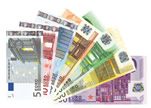 As of January 1, 2002, the euro (€) replaced the national currency of 12 countries within the European Union, including France. You can exchange currency at any bank branch (hours are listed below). Automatic cash machines can be found in most commercial centres.
As of January 1, 2002, the euro (€) replaced the national currency of 12 countries within the European Union, including France. You can exchange currency at any bank branch (hours are listed below). Automatic cash machines can be found in most commercial centres.
French Euro Banknotes
The seven Euro banknotes carry the theme of the "Ages and Styles of Europe". Each of the notes has gateways and windows on its front and bridges on the back designed in a specific architectural style. Gateways and windows are intended to symbolize the European spirit of openness and co-operation, whereas bridges symbolize the close co-operation and communication between Europe and the rest of the world.
The 5 euro note represents the classical architectural style, the 10 euro note has a romanesque design, the 20 euro note has a gothic motif, the 50 euro note represents the renaissance period, the 100 euro note depicts the baroque and rococo periods, the 200 euro note displays iron and glass architecture and the 500 euro note depicts modern 20th Century architecture.
|
||
| 5 Euro (€5) | ||
| 10 Euro (€10) | ||
| 20 Euro (€20) | ||
| 50 Euro (€50) | ||
| 100 Euro (€100) | ||
| 200 Euro (€200) | ||
| 500 Euro (€500) | ||
French Euro Coins
The front of each coin features one of three designs common to all twelve euro area countries showing different maps of Europe surrounded by the twelve stars of the European Union. The reverse side of each coin shows individual designs relating to the respective member state. (Euro coins can be used anywhere in the euro area, regardless of their national origin.)
The French €1 and €2 coins use a tree, drawn by the artist Joaquim Jimenez, symbolising life, continuity and growth. It is contained in a hexagon and encircled by the motto of the Republic, “Liberté, Egalité, Fraternité” (Liberty, equality, fraternity). The edge lettering of the €2 coin is 2**, repeated six times, alternately upright and inverted.
The 10, 20 and 50-cent coins depict the theme of the sower, which is a constant in the history of the French franc. Designed by Laurent Jorlo, “this modern, timeless graphic represents France, which stays true to itself, whilst integrating into Europe”.
The 1, 2 and 5-cent coins depict a young, feminine Marianne with determined features that embody the desire for a sound and lasting Europe. The design was the work of Fabienne Courtiade, an engraver from the Paris Mint.
|
||
 |
1 Cent | 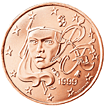 |
 |
2 Cent | 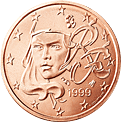 |
 |
5 Cent | 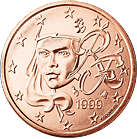 |
 |
10 Cent |  |
 |
20 Cent |  |
 |
50 Cent |  |
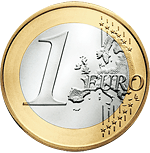 |
1 Euro (€1) | 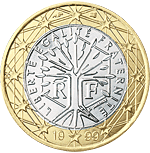 |
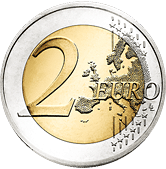 |
2 Euro (€2) |  |
Bank Opening Hours:
Bank Opening Hours Banking hours in Paris are usually from 10am to 5pm, Monday to Friday. Throughout the rest of France, banks are usually open from 10am to 1pm, and 3pm to 5pm, Tuesday through Saturday. Banks often close earlier the day before a public holiday.
Currency exchange
Currency exchangeCurrency exchange can be carried out at all bank branches and Post Offices. Bureaux de change can also be found in large department stores, railway stations, airports and near to tourist sites. Please note: although the exchange rate is fixed, commission rates are not. By law these must be clearly displayed.
Check out the current Euro exchange rate with your currency here (close the new window to return):
TRAVELSIGNPOSTS CURRENCY CONVERTER

 Take Better Digital Photos eBook
Take Better Digital Photos eBook Guerrilla Travel Photography eBook
Guerrilla Travel Photography eBook
Leave a Reply